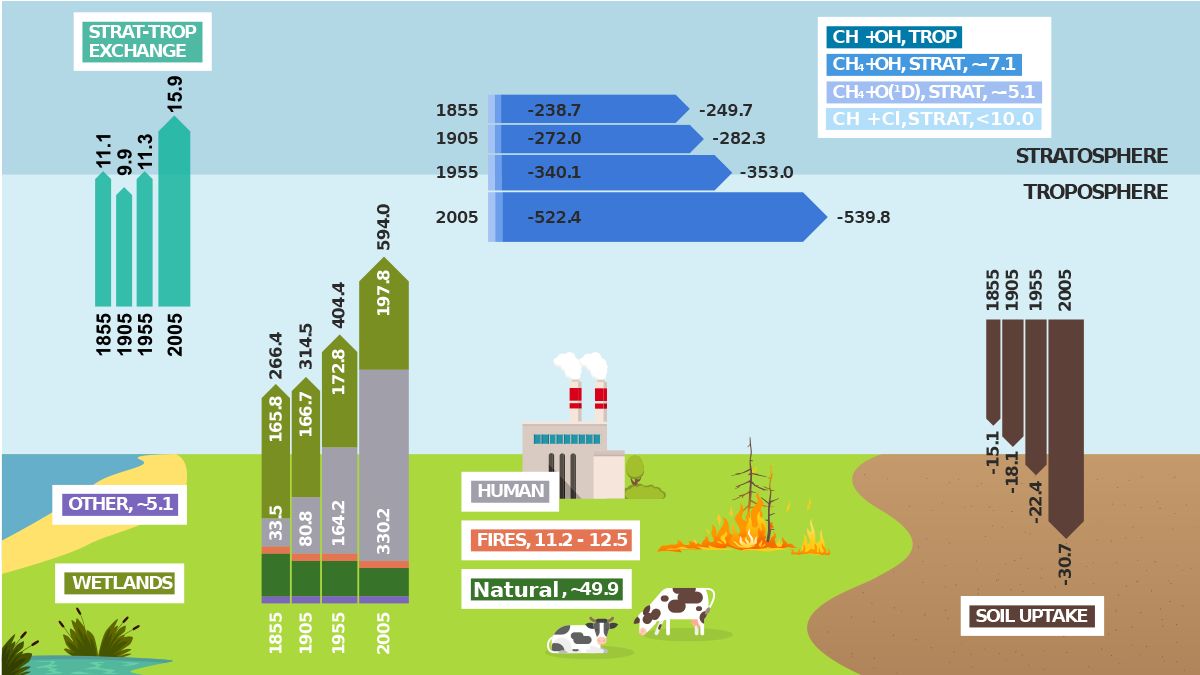Editors’ Highlights are summaries of recent papers by AGU’s journal editors.
Source: Journal of Advances in Modeling Earth Systems
Methane (CH4) is a key atmospheric trace gas for two important reasons: it is a powerful greenhouse gas, second only to carbon dioxide, and it is a pollutant that plays a critical role in the formation of ozone in the troposphere near the surface, a phenomenon also known as ‘summer smog’. Since the mid-twentieth century, anthropogenic emissions have become the dominant source of methane pollution. Therefore, methane has been targeted as a key component in climate and air quality mitigation strategies.
Folberth et al. [2022] describe a newly developed methane emission-driven process model, representing the global methane cycle within the United Kingdom Earth System Model Version 1.0 (UKESM1) framework. They evaluate the model’s performance against available observations of methane and methane emissions. The authors demonstrate that the new methane emission-driven model simulates all the components of the methane cycle within observational uncertainty.
UKESM1-ems (methane emission-driven UKESM1) represents one of the first Earth system models to simulate the global methane cycle fully interactively with unprecedented detail. The significant step in this development is the inclusion of feedbacks of the methane cycle within the Earth system. This new capability advances the international climate science community’s ability of providing essential evidence to underpin climate mitigation policy by targeting methane reduction strategies and evaluating their impacts on climate and the Earth system.
Citation: Folberth, G. A., Staniaszek, Z., Archibald, A. T., Gedney, N., Griffiths, P. T., Jones, C. D., et al. (2022). Description and evaluation of an emission-driven and fully coupled methane cycle in UKESM1. Journal of Advances in Modeling Earth Systems, 14, e2021MS002982. https://doi.org/10.1029/2021MS002982
—Jiwen Fan, Editor, Journal of Advances in Modeling Earth Systems

